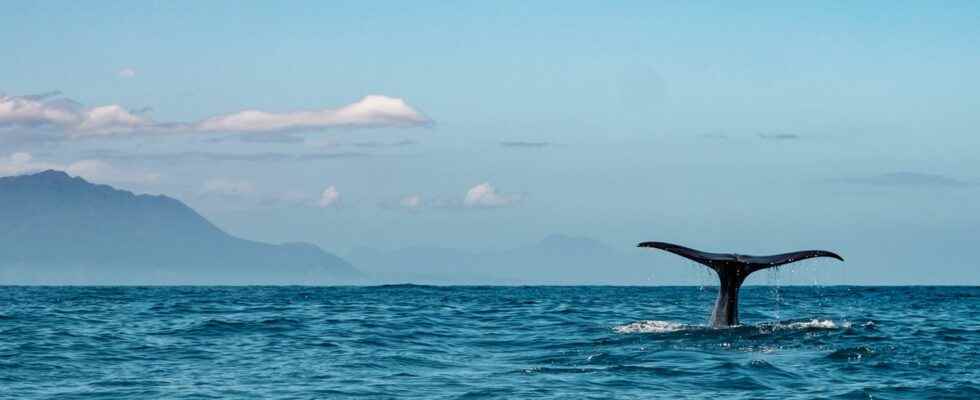3
Researchers at the Cetacean Research Institute in Greece have developed a system to locate sperm whales in the Mediterranean. It could help avoid collisions with ships.
It’s the tail of a sperm whale. © Getty Images
Is there futile techno-solutionism, for example an application of contact tracing for the Covid, and a commendable techno-solutionism, such as that aimed at protecting vulnerable animals? In Greece, since 2019, researchers have launched the SAvEWhales project, aimed at saving whales from potential collisions with ships. This ambitious project with ethical tendencies takes root in Greece, and its setting in abyss is done more precisely at the level of the Hellenic trench, a sort of underwater canyon 5 km deep formed by the convergence between the Eurasian and African tectonic plates in Eastern Mediterranean. Stretching from the Ionian Sea, south to Crete, and further to the Sea of Rhodes, this area is the most prized regional habitat of the largest toothed whale: the sperm whale.
This marine animal has a particularity: to hunt, it produces pulsating sounds, a kind of clicking or cackling. The researchers thus installed a network of three hydrophones suspended from surface buoys at depths of around 100 m and 1 to 2 km apart, which pick up the sounds emitted by the sperm whales. Upon receipt, audio data from all buoys, along with other data, is combined to enable 3D detection and localization of vocalizing animals. The system is quite simple: a computer program is responsible for comparing the time it took for the sound to arrive at each hydrophone, which makes it possible to triangulate the position of the whale. Even more impressively, the system can detect the whale up to 900m deep and less than 10km from buoys, by calculating the time it took for a “click” to bounce off the ocean surface.
The SWAN Acoustic Station (left to right): Benthowave hydrophone and STS depth/temperature sensor, power/data cable, battery, floats, CPU case, solar panel plate © SAvEWhales
“The development, deployment and operation of the SAvEWhales observatory for two three-month periods in the summer of 2020 and 2021 demonstrated the feasibility of real-time monitoring of vocalizing sperm whales during their feeding dives.explain the researchers. This can be an important tool in mitigating ship strikes, which pose the greatest threat to sperm whales in the eastern Mediterranean, especially in cases where major shipping lanes cross the Hellenic Trench and cannot be separated from habitats of sperm whales by a simple displacement”.
3D location of sperm whales. It is possible to see the routes taken as well as the depths where the cetaceans evolve. © SAvEWhales
Since the period between the last “click” during a foraging dive and the resurfacing of a whale is typically 6 to 11 minutes, real-time location — with an accuracy of 30 to 40 meters – leaves enough time to perform evasive maneuvers, say specialists. But the system is not perfect. For example, it is difficult to differentiate individual whales from a group of moving whales, while the equipment can be damaged by weather conditions and salt. The researchers have so far only carried out a pilot test, and have so far come up against the silence of the authorities for the deployment of similar beacons off Crete. It must be said that this is an area used for oil exploitation.

